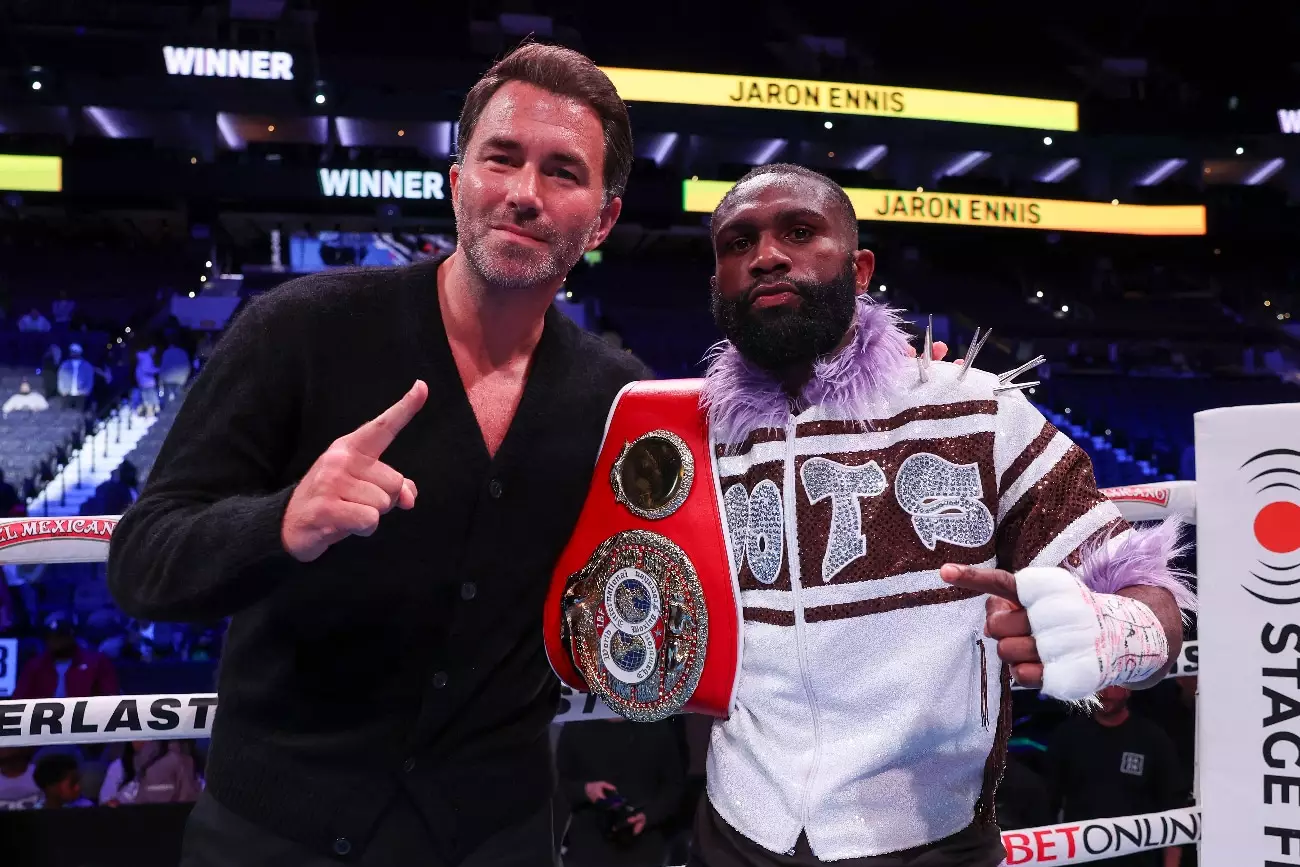Eddie Hearn, a prominent figure in boxing promotion, recently disclosed ongoing negotiations for a high-stakes unification bout between Jaron “Boots” Ennis and Eimantas Stanionis, the reigning WBA welterweight champion. This development shines a spotlight on the complexities that often surround major boxing matchups. As Ennis approaches his 27th birthday and holds an immaculate record of 33-0 with 29 knockouts, the urgency to unify the welterweight division becomes increasingly critical. The fight against Stanionis is pivotal, as Ennis aims to secure a total of three unification bouts to achieve his goal of becoming the undisputed champion at 147 pounds.
Stanionis: A Formidable Opponent
While Ennis is celebrated for his athletic prowess and knockout power, Stanionis presents a different kind of challenge. With a record of 15 wins and no losses, including 9 knockouts, the Lithuanian fighter possesses both the physicality and technical acumen that could disrupt Ennis’s ambitions. Hearn has also hinted at the potential for Stanionis to prove a formidable adversary, contrasting Ennis’s strengths with the challenger’s skillset and determination. This raises an essential question: could this matchup see Ennis experiencing more difficulties than anticipated?
Hearn’s optimism about the fight becoming a reality is tempered by the financial intricacies that often dictate boxing negotiations. Past attempts to secure a unification bout for Ennis against WBO champion Brian Norman Jr. hit a wall because Hearn failed to meet Norman’s financial demands. This predicament highlights a broader issue in boxing: the balancing act of securing lucrative deals while ensuring that matchups are made between valuable but divergent personalities. Stanionis, being the underdog in any potential fight against Ennis, will undoubtedly seek financial compensation that reflects the risk he undertakes by stepping into the ring with an unbeaten champion.
Failure to orchestrate meaningful fights can be detrimental to Ennis’s budding career. As he remains fixated on achieving unification at 147 pounds, there is the risk of stagnation. It’s imperative that Hearn reevaluates the strategic pathway for Ennis if negotiations for this potentially transformative fight do not materialize. Speculation has arisen that a transition to the 154-pound division might be a wise move for Ennis. This shift could open doors to more appealing matchups with larger paydays, especially if pursuing unification seems increasingly elusive.
While the ambition for unification fights is laudable, boxing’s landscape is fraught with obstacles that complicate the journey towards that goal. For Ennis, the allure of unifying the welterweight division may be more significant on a personal level than its tangible benefits for his overall career trajectory. The potential battle against Stanionis represents not just a lucrative opportunity but a critical turning point in Ennis’s quest for legacy within the sport. One thing stands clear: as negotiations continue, both the financial and competitive dynamics will play significant roles in shaping the future of Jaron Ennis’s illustrious career in boxing.

